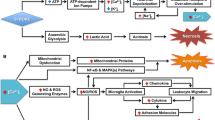Abstract
Herbal medicines, mainly of plant source, are invaluable source for the discovery of new therapeutic agents for all sorts of human ailments. The complex pathogenesis of stroke and multifactorial effect of herbal medicine and their active constituents may suggest the promising future of natural medicine for stroke treatment. Anti-oxidant, anti-inflammatory, anti-apoptotic, neuroprotective and vascular protective effect of herbal medicines are believed to be efficacious in stroke treatment. Herbs typically have fewer reported side effects than allopathic medicine, and may be safer to use over longer period of time. Herbal medicines are believed to be more effective for the longstanding health complaints, such as stroke. Several medicinal plants and their active constituents show the promising results in laboratory research. However failure in transformation of laboratory animal research to the clinical trials has created huge challenge for the use of herbal medicine in stroke. Until and unless scientifically comprehensive evidence of the efficacy and safety of herbal medicine in ischemic stroke patients is available, efforts should be made to continue implementing treatment strategies of proven effectiveness. More consideration should be paid to natural compounds that can have extensive therapeutic time windows, perfect pharmacological targets with few side effects. Herbal medicine has excellent prospective for the treatment of ischemic stroke, but a lot of effort should be invested to transform the success of animal research to human use.
Similar content being viewed by others
References
Andersen KK, Olsen TS, Dehlendorff C, Kammersgaard LP. Hemorrhagic and ischemic strokes compared: stroke severity, mortality, and risk factors. Stroke 2009;40:2068–2072.
Iadecola C, Anrather J. The immunology of stroke: from mechanisms to translation. Nat Med 2011;17:796–808.
Moskowitz MA, Lo EH, Iadecola C. The science of stroke: mechanisms in search of treatments. Neuron 2010;67:181–198.
Yenari MA, Han HS. Neuroprotective mechanisms of hypothermia in brain ischaemia. Nat Rev Neurosci 2012;13:267–278.
Astrup J, Siesjo BK, Symon L. Thresholds in cerebral ischemia—the ischemic penumbra. Stroke 1981;12:723–725.
Bandera E, Botteri M, Minelli C, Sutton A, Abrams KR, Latronico N. Cerebral blood flow threshold of ischemic penumbra and infarct core in acute ischemic stroke: a systematic review. Stroke 2006;37:1334–1339.
Fisher M. The ischemic penumbra: identification, evolution and treatment concepts. Cerebrovasc Dis 2004;17(Suppl 1):1–6.
Segura T, Calleja S, Jordan J. Recommendations and treatment strategies for the management of acute ischemic stroke. Expert Opin Pharmacother 2008;9:1071–1085.
Feigin VL. Herbal medicine in stroke: does it have a future? Stroke 2007;38:1734–1736.
Gong X, Sucher NJ. Stroke therapy in traditional Chinese medicine (TCM): prospects for drug discovery and development. Trends Pharmacol Sci 1999;20:191–196.
Gaire BP, Moon SK, Kim H. Scutellaria baicalensis in stroke management: nature’s blessing in traditional Eastern medicine. Chin J Integr Med 2014;20:712–720.
Ho JW, Cheung MW, Yu VW. Active phytochemicals from Chinese herbs as therapeutic agents for the heart. Cardiovasc Hematol Agents Med Chem 2012;10:251–255.
Lozoya X. Two decades of Mexican ethnobotany and research in plant drugs. Ciba Found Symp 1994;185:130–152.
Green AR. Pharmacological approaches to acute ischaemic stroke: reperfusion certainly, neuroprotection possibly. Br J Pharmacol 2008;153(Suppl 1):S325–S338.
Shankar K, Liao LP. Traditional systems of medicine. Phys Med Rehabil Clin N Am 2004;15:725–747.
Kiefer D, Pitluk J, Klunk K. An overview of CAM: components and clinical uses. Nutr Clin Pract 2009;24:549–559.
Harvey AL, Edrada-Ebel R, Quinn RJ. The re-emergence of natural products for drug discovery in the genomics era. Nat Rev Drug Discov 2015;14:111–129.
Iriti M, Vitalini S, Fico G, Faoro F. Neuroprotective herbs and foods from different traditional medicines and diets. Molecules 2010;15:3517–3555.
Wu PF, Zhang Z, Wang F, Chen JG. Natural compounds from traditional medicinal herbs in the treatment of cerebral ischemia/reperfusion injury. Acta Pharmacol Sin 2010;31:1523–1531.
Gaire BP, Subedi SL. Medicinal plant diversity and their pharmacological aspects of Nepal Himalayas. Pharmacogn J 2011;2:6–17.
Ernst E. Herbal medicines: balancing benefits and risks. Novartis Found Symp 2007;282:154–172, 212–218.
Benzie IFF, Wachtel-Galor S, eds. Herbal medicine: biomolecular and clinical aspects. 2nd ed. Boca Raton (FL): CRC Press/Taylor & Francis; 2011.
Mantz J, Degos V, Laigle C. Recent advances in pharmacologic neuroprotection. Eur J Anaesthesiol 2010;27:6–10.
Ernst E, Pittler MH. Risks associated with herbal medicinal products. Wien Med Wochenschr 2002;152:183–189.
Capasso R, Izzo AA, Pinto L, Mascolo N. Phytotherapy and quality of herbal medicines. Fitoterapia 2000;71(Suppl 1):S58–S65.
Jordan SA, Cunningham DG, Marles RJ. Assessment of herbal medicinal products: challenges, and opportunities to increase the knowledge base for safety assessment. Toxicol Appl Pharmacol 2010;243:198–216.
Ernst E. Risks of herbal medicinal products. Pharmacoepidemiol Drug Saf 2004;13:767–771.
Pinn G. Adverse effects associated with herbal medicine. Aust Fam Physician 2001;30:1070–1075.
Author information
Authors and Affiliations
Corresponding author
Electronic supplementary material
11655_2018_2828_MOESM1_ESM.pdf
Appendix 1. Neuroprotective Effects of Well-Known Medicinal Plants/Phytochemicals and Their Mechanism of Action in Stroke
Rights and permissions
About this article
Cite this article
Gaire, B.P. Herbal Medicine in Ischemic Stroke: Challenges and Prospective. Chin. J. Integr. Med. 24, 243–246 (2018). https://doi.org/10.1007/s11655-018-2828-2
Received:
Published:
Issue Date:
DOI: https://doi.org/10.1007/s11655-018-2828-2




